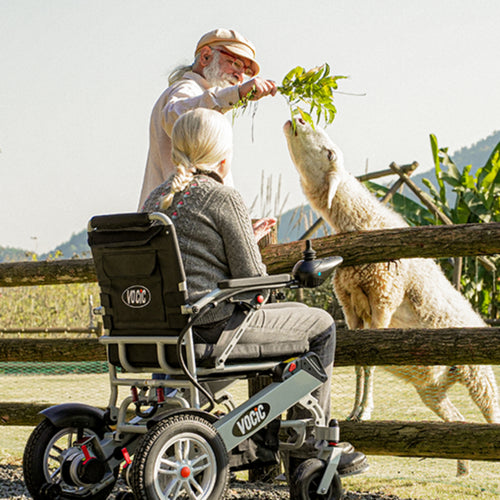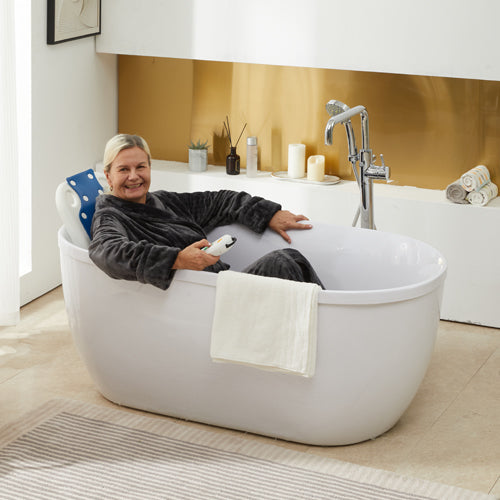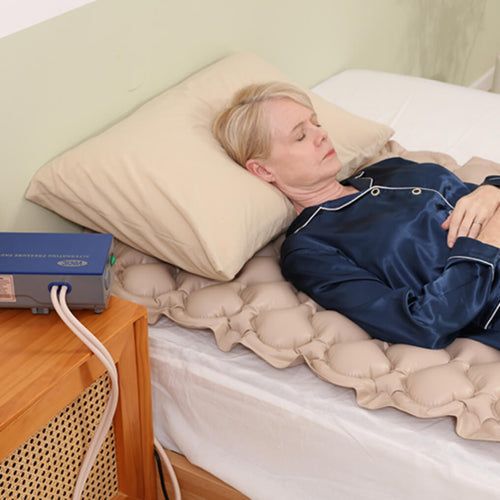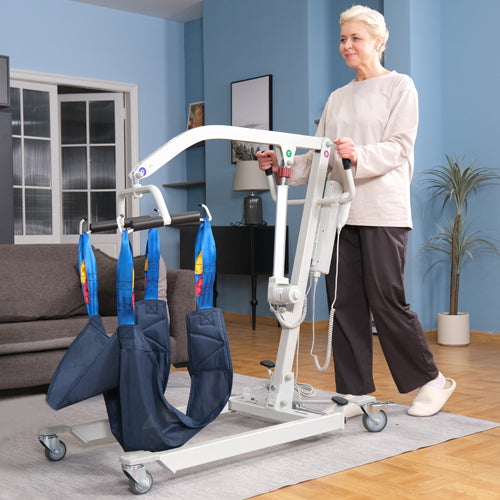All around the world, you will always find a mobility scooter becoming motionless with one fault or the other. It's quite ironic and distateful for mobility equipment becoming a major immobility factor for whoever purchases them.
Mobility scooters provide freedom for many people who have problems walking. This is necessary equipment that allows older and disabled people to move from one place to another without help from anyone.
However, like any other machine, mobility scooters face various mechanical problems. Mobility scooter problems range from battery issues to motor malfunction, steering problems, etc. Fear not. All these problems are what you can fix with the comprehensive scooter repair manual or guide that we provide in this article. Let's dive into it.
Common Mobility Scooter Problems
Having your mobility scooter grounded with one or more problems can be excruciating and frustrating most times. However, this is not a terminal consequence you must brood over. Like any other machine, mobility scooters tend to get faulty sometimes.
There are 6 common mobility scooter problems. Fortunately, these problems can be quickly addressed with your mobility scooter troubleshooting guide or mobility scooter repair manual. Let's look into these common problems and hint at how you can avert them from happening.
1. Battery Issues

It's very common to come across mobility scooters with battery issues. This is one of the most profound problems you'll see troubling 6 out of 10 mobility scooters. Times have changed with the introduction of a modern scooter with an alert mechanism that tells you when the battery needs replacing.
By default, the battery of an average mobility scooter is designed to run 10 miles on a single charge. However, over time, the battery might malfunction and become problematic. Additionally, there are many other ways to discover whether your favorite mobility scooter has battery issues.
Symptoms of mobility scooter battery problems
- When your scooter takes longer to charge than the standard charging period.
- When your charger can not recognize the scooter battery.
- When your scooter refuses to turn on even after checking all other components.
- When your scooter loses power quickly. For instance, you discover that your mobility scooter battery draining fast, from 50 percent to zero percent, with just a few uses.
Solutions to mobility scooter batter problems
- You must check the battery connection to see if any part is loose or corroded. If you see mishaps in your battery, you should clean it and tighten the looseness.
- In some cases, a damaged battery ends up smelling like burnt plastic. It would help if you were conscious of such smells to decide the root cause of the problem. If you encounter issues like this, your battery needs a total replacement.
- Another thing to do is check your scooter charging port. It is expected to diagnose the arbitrary battery percentage reduction. To curb this, ensure good charging practices and never let your scooter battery run down entirely.
2. Motor Malfunctions

Motor malfunction is quite common among mobility scooters that have been in use for a long. This problem occurs when you overload the scooter above the weight limit.
You can check your user manual to see the recommended weight limit. Also, Motor malfunction can be caused by trying to climb steep inclines, leading to reduced functioning.
Symptoms of mobility scooter motor malfunction
- When your scooter makes unexpected jerky movements and unusual voices.
- When your scooter keeps falling short while climbing steep inclines.
Solutions to mobility scooter motor malfunction
- Motor malfunction in mobility scooters is not something you can fix by yourself. This is a more technical problem that requires a certified expert.
- You can only check the motor connection for any debris or displacement.
- If everything seems fine and the problem persists, contact a professional who can diagnose the problem and fix it.
3. Tire Problems

Mobility scooters are designed to last many years and go a thousand miles. The extensive usage and longevity can only result in extensive tire degradation most especially wear and tears.
Mobility scooter uses two types of tires: pneumatic and solid tires. Both tire types will surely wear, but one will go before the other. Solid tires are hard-wearing compared to pneumatic ones. Tire problems in mobility scooters can also affect the brake functioning. Therefore, you must keep checking the tire, especially in areas with rugged terrain and uneven surfaces.
Symptoms of mobility scooter tire problem
- When your mobility scooter feels bumpy or uneven when riding.
- When your mobility scooter pulls to one side instead of straight-line riding.
- When you see a visible deflation on the tire.
Solutions to mobility scooter tire problem
- A damaged tire can come at any time. So, consider checking the tire pressure occasionally and inflating it to the recommended level.
- If you suspect a punctured or deflated tire, you should repair or replace it instantly.
- Solid tires are an excellent way to reduce tire problems on your mobility scooter.
4. Electrical System Failures
The electrical connection of your mobility scooter is the heart that powers the entire working process. When this is faulty, it blows the whole scooter component, including the lights, motor, control, etc.
You cannot see electrical fault with your bare eyes; it's quite intangible. The apparent causes of electrical system failure in your mobility scooter include blown fuses, water damage, faulty components, etc. Let's look at the symptoms of this frustrating experience.
Symptoms of mobility scooter electrical problem
- When your scooter loses power momentarily or exhibits some unusual behavior,
- When lighting components like the taillight, headlight, and even the control panel button malfunctions.
- When you experience a complete loss of power from your scooter.
- When you perceive burning smells or unusual cringy sounds from the scooter.
Solutions to your mobility scooter electrical problem
- Electrical system failure is not like any other mobility scooter problem. You should seek help from a qualified technician to get it sorted, but before that, you can do the following.
- Check your mobility scooter troubleshooting guide to find the fuse box. This is important to see the blown fuses and get them changed.
- You can also check the wires and connector for any looseness or corrosion.
5. Steering and Control Issues

Mobility scooter steering is as essential as the motor. Your mobility scooter tilting towards a certain angle instead of the standard straight line shows steering and control issues.
There are two types of steering: D-shaped and T-shaped, or handlebars steering. Both are great options, but the T-shaped steering provides superb control and is durable for long-distance riding.
Various factors, like misalignment, worn tires, loose steering components, etc, can cause steering and control issues for your mobility scooter.
Symptoms of mobility scooter steering and control issues
- When your mobility scooter vibrates while driving and uneven tread wear.
- When your mobility scooter drives towards another dimension different from where you steer.
- When you are having difficulty turning from one direction to the other.
Solutions to mobility scooter steering and control issue
- Realigning the steering can solve your mobility scooter steering and control problem. This is how you can do it, park the scooter on level ground, hold the front wheel, and get someone to turn the steering column until it turns straight.
- This simple process does not apply to scooters with complex steering systems. In a situation like this, you must call a professional to realign it.
6. Upholstery and Body Damage

While upholstery and body damage might not affect the functionality of your mobility scooter, they can ruin its comfortability and your esteem.
The daily usage of mobility scooters often brings about wear and tear to the upholstery. It is quite distasteful to move with a tattered-looking scooter or sit on a worn-out chair.
Solutions to mobility scooter upholstery and body damage
- Depending on the severity of the damage and worn-out upholstery, you can still fix minor tears and scratches. You can use a leather or vinyl repair kit to improve the damaged part.
- Also, use a touch-up paint that matches your scooter design to fix the damaged parts.
- For more severe damage with extensive tears and scratches, seek a professional repair service.
Should You Fix Your Mobility Scooter Yourself?
Considering the various types of mobility scooter problems, it's essential to understand how to fix some simple issues. However, fixing a mobility scooter yourself might exacerbate the issue if care is not taken.
Therefore, you should always shy away from fixing mobility scooters yourself. Instead, contact a professional mobility scooter technician. One important thing to get clarity on the severity of the mobility scooter problems is to utilize mobility scooter fault codes or beep codes.
Mobility scooter fault codes are diagnostic codes designed to help you perform basic troubleshooting tasks. Mobility scooter fault codes work by linking the code received with the beep code chart in the mobility scooter repair manual.
Mobility Scooter Daily Maintenance Tips
Mobility scooter is essential for older people or disabled with walking difficulty. Like any other machine, mobility scooters require daily maintenance to operate efficiently. The following are the mobility scooter daily maintenance tips:
- Regularly check the battery compartments to clean dust, dirt, and other debris.
- Examine the tire and ensure they are inflated to the manufacturer's specifications.
- Apply your scooter break to ensure they are working correctly.
- Look for any visible body damages and address them accordingly.
- Refer to the user manual for comprehensive maintenance instructions.
Conclusion
Mobility scooter is an excellent addition for those battling restricted mobility, especially elders and people with disabilities. Understanding common problems, causes, and solutions is a perfect way of ensuring you enjoy the freedom it possesses.
It's advisable you keep up with our suggested daily maintenance tips to identify and fix problems before they fester.
In situation where identifying and fixing a problematic mobility scooter would take away your comfort,visit VOCIC to purchase another mobility scooter. VOCIC is your trusted partner that offers seamless online ordering and free 30-day trial with easy return and lifetime support.









